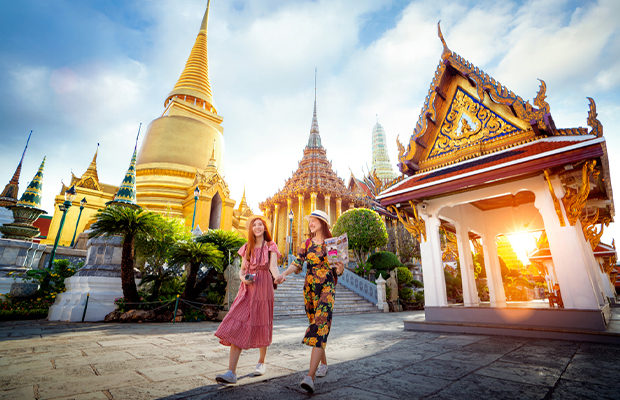Unraveling the Truth behind the Killing Fields of Cambodia
The Khmer Rouge regime in Cambodia remains one of the most brutal and devastating periods of modern history. Millions of Cambodians lost their lives due to the regime's extreme ideology and policies. However, despite the international community's efforts to bring the Khmer Rouge leadership to justice, many misunderstandings about the atrocities committed during this time still exist.
It is crucial to continue to unpack these misunderstandings and seek justice for the victims of the Khmer Rouge regime so that we can fully understand the historical context of these events and prevent similar atrocities from occurring in the future.
![]() 1. What happened in the Killing Fields Cambodia and Why?
1. What happened in the Killing Fields Cambodia and Why?
![]() 2. It's difficult for children to visit the killing fields in Cambodia.
2. It's difficult for children to visit the killing fields in Cambodia.
![]() 3. How were the Killing Fields discovered?
3. How were the Killing Fields discovered?
![]() 4. Everybody in Cambodia was the target during the Khmer Rouge regime.
4. Everybody in Cambodia was the target during the Khmer Rouge regime.
![]() 5. The Khmer Rouge was a humanist organization.
5. The Khmer Rouge was a humanist organization.
![]() 6. What role did international actors play in the Cambodian genocide?
6. What role did international actors play in the Cambodian genocide?
![]() 8. How have survivors and families of victims coped with the trauma of their experiences?
8. How have survivors and families of victims coped with the trauma of their experiences?
![]() 9. How has the legacy of the Khmer Rouge affected Cambodian society and politics?
9. How has the legacy of the Khmer Rouge affected Cambodian society and politics?
![]() 12. Ethnic or religious tensions did not drive the Cambodian genocide.
12. Ethnic or religious tensions did not drive the Cambodian genocide.
![]() 14. The Killing Fields were the only sites where mass killings and executions occurred.
14. The Killing Fields were the only sites where mass killings and executions occurred.
![]() 15. People still have efficient food delivery during the Khmer Rouge regime.
15. People still have efficient food delivery during the Khmer Rouge regime.
![]() 16. Thinking that the genocide was purely an internal matter.
16. Thinking that the genocide was purely an internal matter.
![]() 17. How cruel was it during the Khmer Rouge regime?
17. How cruel was it during the Khmer Rouge regime?
![]() 18. Believing that the conflict ended with the fall of the Khmer Rouge.
18. Believing that the conflict ended with the fall of the Khmer Rouge.
![]() 19. Except for the Khmer Rouge, were there other violent events once in Cambodia?
19. Except for the Khmer Rouge, were there other violent events once in Cambodia?
![]() 20. The misconception that the Khmer Rouge was a well-organized and disciplined force.
20. The misconception that the Khmer Rouge was a well-organized and disciplined force.
1. What happened in the Killing Fields Cambodia and Why?
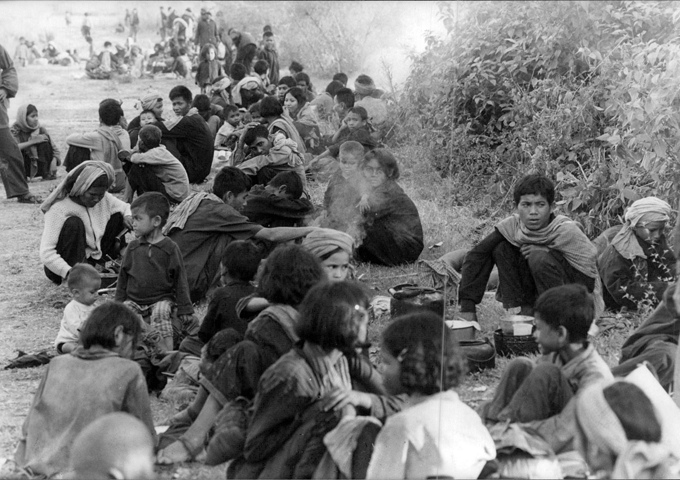
Vintage photo of escape from Khmer Rouge, Cambodia refugees
The Khmer Rouge carried out mass executions and forced labor in the "killing fields" throughout the country. These sites were used to kill and bury millions of Cambodians who were deemed to be enemies of the regime, including intellectuals, ethnic minorities, and former government officials. The Khmer Rouge aimed to create a pure, agrarian society by eliminating perceived threats to their utopian vision.
2. It's difficult for children to visit the killing fields in Cambodia.
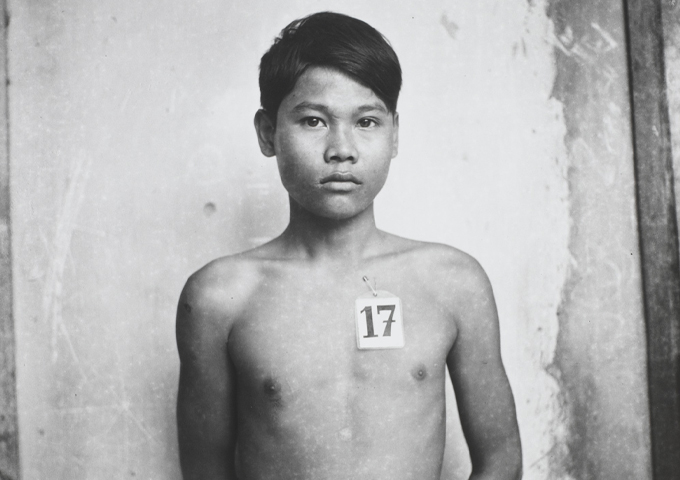
Facing death, portrait from Cambodia's killing fields
The Killing Fields in Cambodia is a deeply tragic and emotionally charged site where over a million people were brutally murdered during the Khmer Rouge regime. As such, it can be a difficult and potentially traumatic experience for anyone, especially children, to visit.
Whether or not it is proper for children to visit the Killing Fields depends on their maturity level and emotional readiness. Parents or guardians should use their best judgment when considering whether or not to bring their children to the site.
3. How were the Killing Fields discovered?
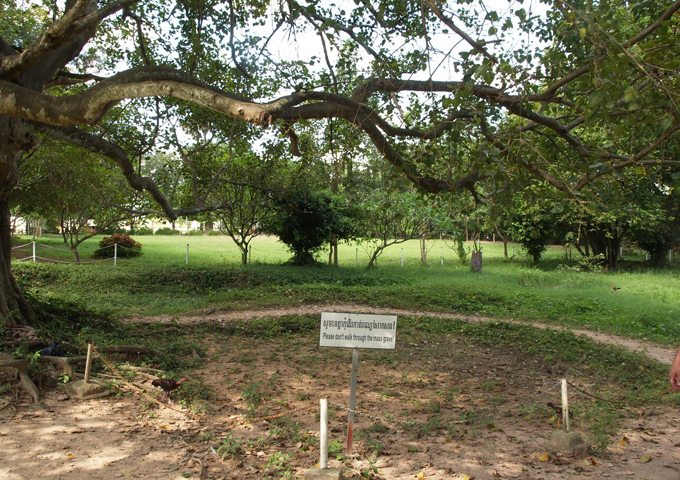
The mass grave, Choeung Ek
The first significant discovery of the Killing Fields was in 1979 when a Vietnamese army unit stumbled upon a mass grave in the village of Choeung Ek outside the Cambodian capital of Phnom Penh. Subsequent investigations uncovered many more mass graves throughout the country, revealing the extent of the Khmer Rouge's brutality.
Since then, the Killing Fields have become an important historical site, serving as a reminder of the atrocities committed by the Khmer Rouge and the need to prevent such atrocities from happening again.
4. Everybody in Cambodia was the target during the Khmer Rouge regime.
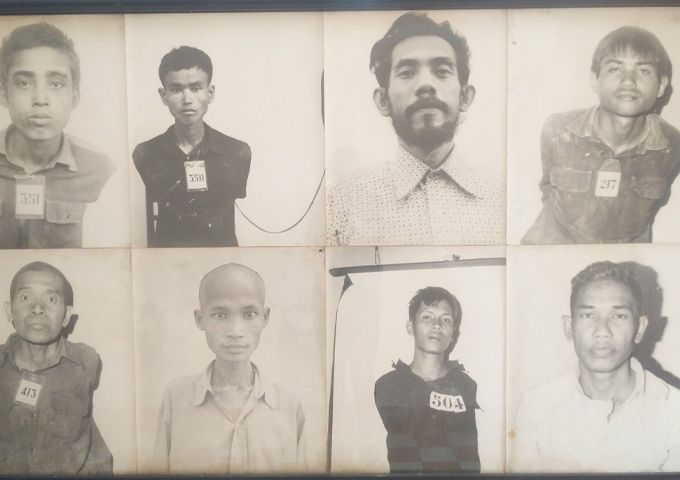
Portraits of victims
The victims of the Killing Fields were primarily ordinary Cambodian citizens, including intellectuals, professionals, religious leaders, and anyone else perceived as a potential threat to the regime. The Khmer Rouge targeted and executed individuals associated with the former government, military, and police, as well as members of ethnic and religious minority groups.
Additionally, the Khmer Rouge forced many city-dwellers to move to rural areas, where they were subjected to forced labor and often died due to harsh working conditions, lack of food, and medical care.
5. The Khmer Rouge was a humanist organization.
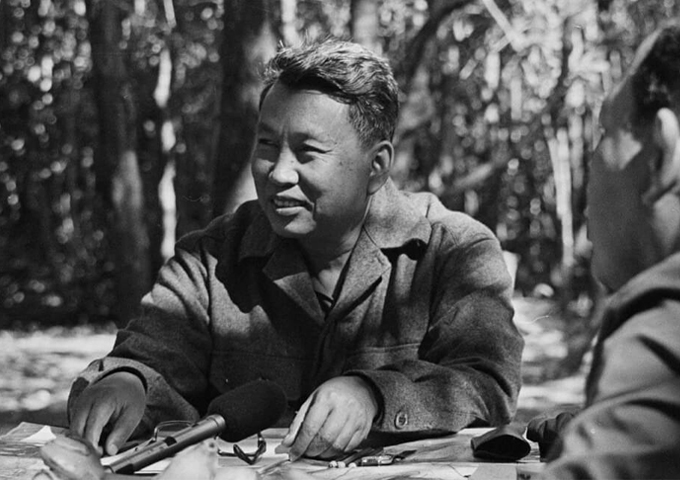
The Khmer Rouge's leader, Pol Pot
No, the Khmer Rouge was not a humanist organization. It was a radical communist regime that ruled Cambodia from 1975 to 1979. The Khmer Rouge's leader, Pol Pot, sought to create an agrarian utopia through radical socialist policies that included forced labor, mass executions, and the abolition of private property and currency.
The Khmer Rouge's policies resulted in the deaths of an estimated 1.7 million to 2.2 million Cambodians through executions, forced labor, starvation, and disease. The regime's brutality and disregard for human life were anything but a humanist.
6. What role did international actors play in the Cambodian genocide?
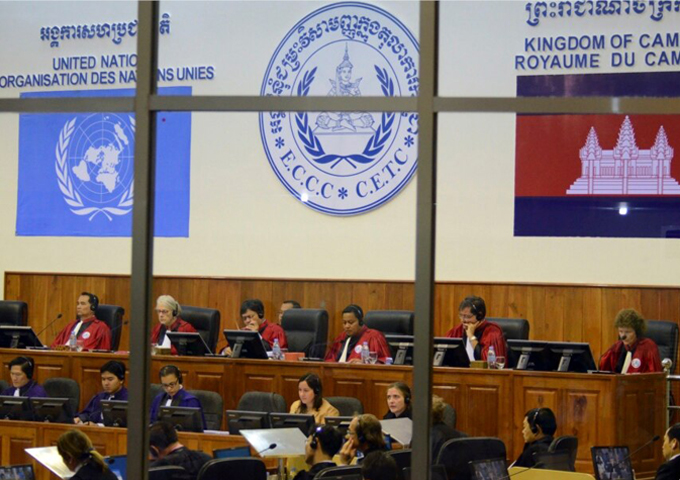
During a hearing of former Khmer Rouge top leaders in Phnom Penh, Cambodia, Oct 19, 2011.
Political and diplomatic factors also complicated the international community's response to the Cambodian genocide. For example, the United Nations, established to promote international peace and security, was often divided over how to respond to the Khmer Rouge's atrocities. Some countries also hesitated to intervene in Cambodia because of concerns about violating national sovereignty or being perceived as interfering in the country's internal affairs.
7. What is the current state of justice and accountability for the crimes committed during the genocide?
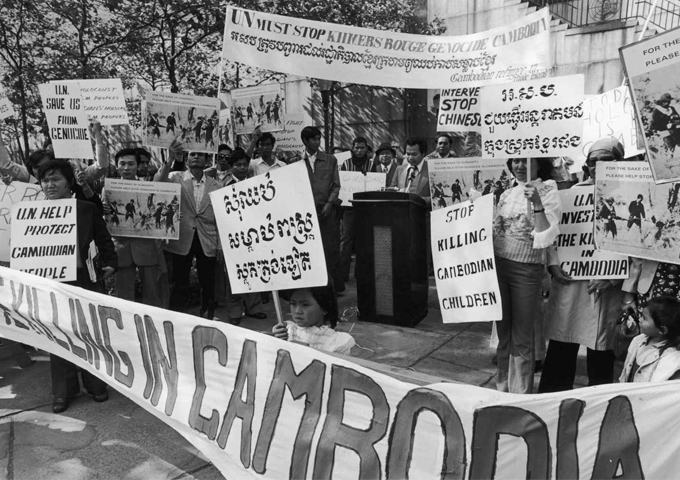
A demonstration outside the UN headquarters in New York City against the genocide in Cambodia, 1975
The Khmer Rouge regime was overthrown in 1979, and many of its leaders fled into the jungle or went into hiding. It was not until years later that efforts were made to hold those responsible for the atrocities accountable.
In 1997, the government of Cambodia requested the assistance of the United Nations to establish a tribunal to prosecute senior Khmer Rouge leaders for crimes against humanity, war crimes, and genocide. The tribunal, known as the Extraordinary Chambers in the Courts of Cambodia (ECCC), was established in 2006, and its first trial began in 2009.
Since then, the ECCC has convicted several high-ranking Khmer Rouge leaders for their roles in the genocide. These include Kaing Guek Eav, also known as "Duch," who was the commander of the notorious S-21 prison, where thousands of Cambodians were tortured and executed. He was sentenced to life imprisonment in 2012. In 2018, two other senior Khmer Rouge leaders, Khieu Samphan and Nuon Chea, were also convicted of genocide and other crimes and sentenced to life imprisonment.
8. How have survivors and families of victims coped with the trauma of their experiences?
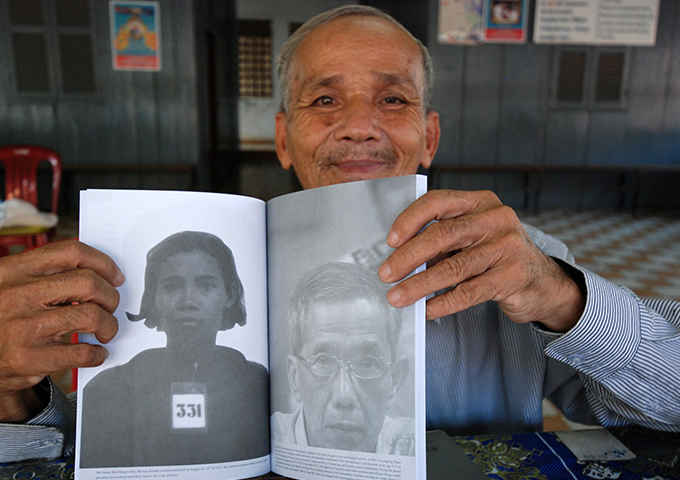
Bou Meng, holding a picture of his wife, tagged 331, was one of only seven known to have survived
How survivors and families of victims cope with the trauma of their experiences can vary greatly depending on the individual and the circumstances of the traumatic event. Some common coping strategies include:
1. Seeking support: Many survivors and families of victims find it helpful to talk to others who have been through similar experiences. This can be through support groups, therapy, or talking with friends and family members.
2. Practicing self-care: Taking care of oneself is vital for coping with trauma. This can include getting enough rest, eating healthy foods, and engaging in joy and relaxation activities.
3. Finding meaning: Some survivors and families of victims find it helpful to find meaning in their experiences, such as by advocating for change or helping others who have been through similar experiences.
4. Seeking professional help: In some cases, professional help may be necessary to cope with the trauma of a traumatic event. This can include therapy, medication, or other forms of treatment.
9. How has the legacy of the Khmer Rouge affected Cambodian society and politics?
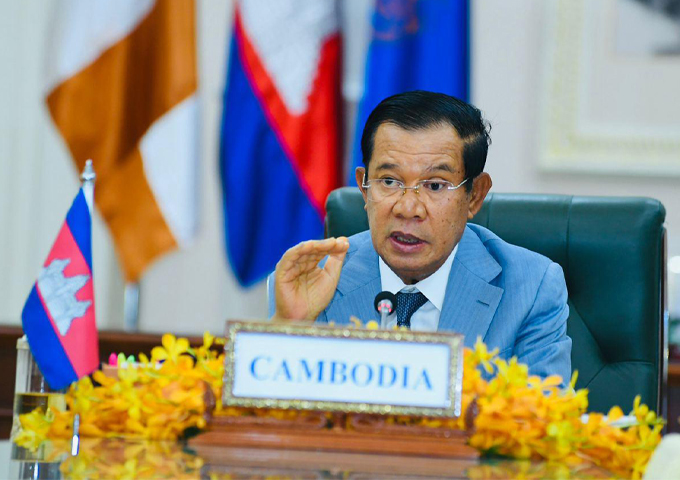
Hun Sen, a former Khmer Rouge commander
The Khmer Rouge regime's legacy is still felt in Cambodia today. The country's political, social, and economic structures were devastated by the genocide and subsequent years of civil war. Many of the country's intellectual and cultural leaders were killed during the Khmer Rouge's reign, leaving a void that has yet to be filled.
The legacy of the Khmer Rouge also continues to affect Cambodian politics. The country's ruling party, the Cambodian People's Party, is led by Hun Sen, a former Khmer Rouge commander. Hun Sen has been in power since 1985, accused of human rights abuses and suppressing political opposition.
10. What lessons can be learned from the Cambodian genocide to prevent similar atrocities in the future?
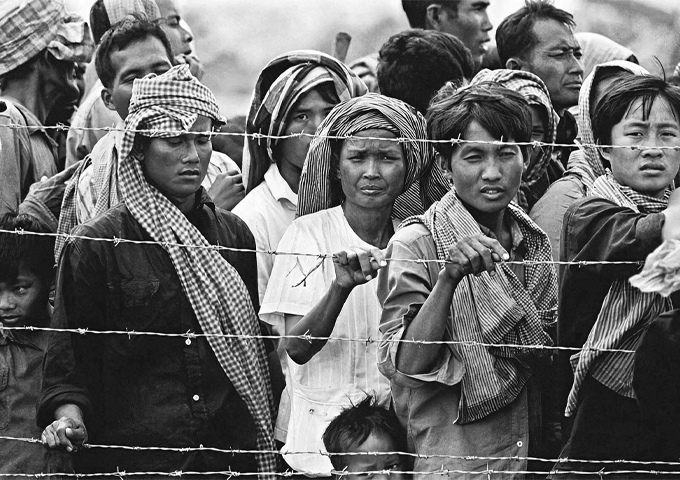
Cambodia Khmer Rouge refugees
The Cambodian genocide is a stark reminder of the consequences of unchecked totalitarianism and the dangers of extremist ideology. The lessons learned from this tragedy can help prevent similar atrocities in the future. Some of the lessons that can be learned include:
1. The importance of strong democratic institutions to prevent the rise of authoritarian regimes.
2. International intervention is needed to prevent and stop genocide and crimes against humanity.
3. The value of holding perpetrators accountable for their crimes and ensuring justice for victims.
4. The importance of education and awareness about the dangers of extremist ideologies and the consequences of genocide.
5. The need for countries to work together to prevent the proliferation of weapons of mass destruction and other tools of violence.
11. The Khmer Rouge regime was a purely communist movement without ties to other political groups or ideologies.
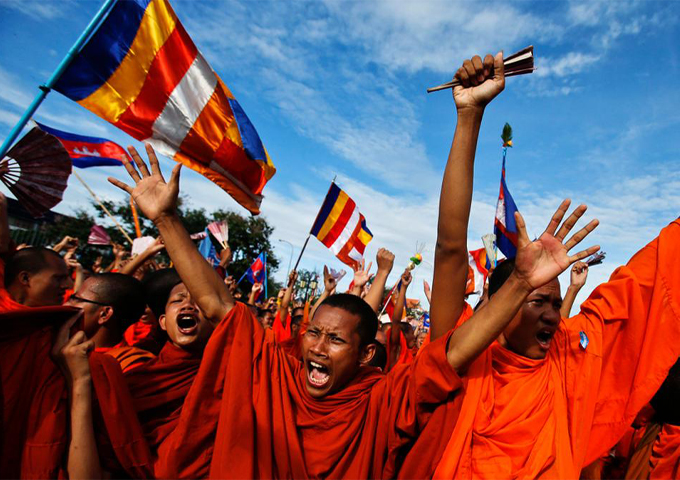
People fight against racism in Cambodia
The Khmer Rouge was not solely a product of communism but also drew on a broader set of political and social ideas in Cambodia at the time. In particular, the Khmer Rouge's leader, Pol Pot, was heavily influenced by the concept of "Khmerism," which emphasized the importance of Khmer identity and culture in opposition to colonialism and foreign influence.
Furthermore, the Khmer Rouge's tactics and policies, such as using forced labor, brutal repression, and mass killings, were not necessarily unique to communism but were part of a broader pattern of authoritarian rule and violence in other regimes throughout history.
12. Ethnic or religious tensions did not drive the Cambodian genocide.
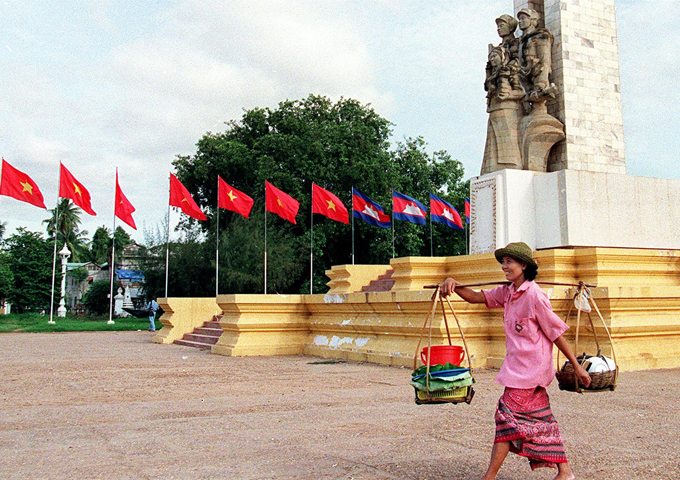
A Cambodian woman selling food walks past the Vietnamese-Cambodian friendship monument
The Khmer Rouge sought to establish a classless society based on Marxist-Leninist principles, which involved the elimination of perceived class enemies, intellectuals, and anyone seen as a threat to the regime's power. This included members of ethnic and religious minority groups and anyone deemed insufficiently loyal or committed to the regime's ideology.
However, it is also worth noting that ethnic and religious minorities were disproportionately affected by the Khmer Rouge's policies, particularly the Cham Muslim minority and the Vietnamese population living in Cambodia. This was partly due to the Khmer Rouge's anti-Vietnamese and anti-Muslim sentiments and the fact that these groups were seen as potential threats to the regime's power.
13. The genocide was not a significant event that had a significant impact on the international community.
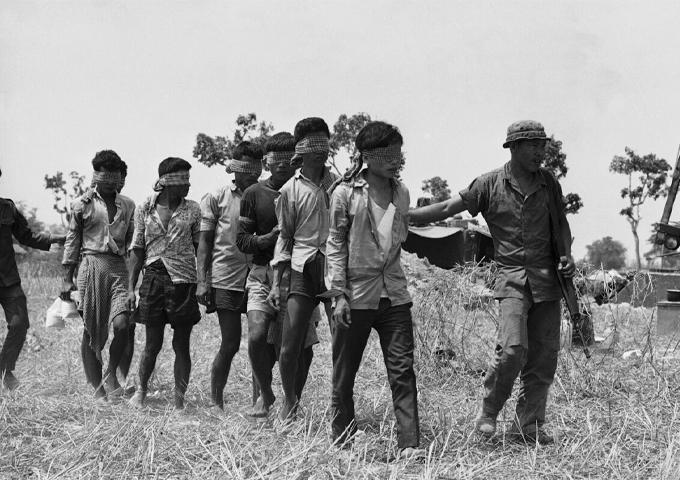
A South Vietnamese soldier takes prisoners to an interrogation center in Kompong Trach, Cambodia, in 1972
The Cambodian genocide was a significant event that profoundly impacted the international community. The genocide, which occurred during the rule of the Khmer Rouge regime from 1975 to 1979, resulted in the deaths of an estimated 1.7 to 2.2 million people, or approximately one-quarter of the Cambodian population at the time.
The brutality and scale of the genocide shocked the world and drew international condemnation. The United Nations, human rights organizations, and governments worldwide actively documented the Khmer Rouge's atrocities and aided the survivors.
14. The Killing Fields were the only sites where mass killings and executions occurred.
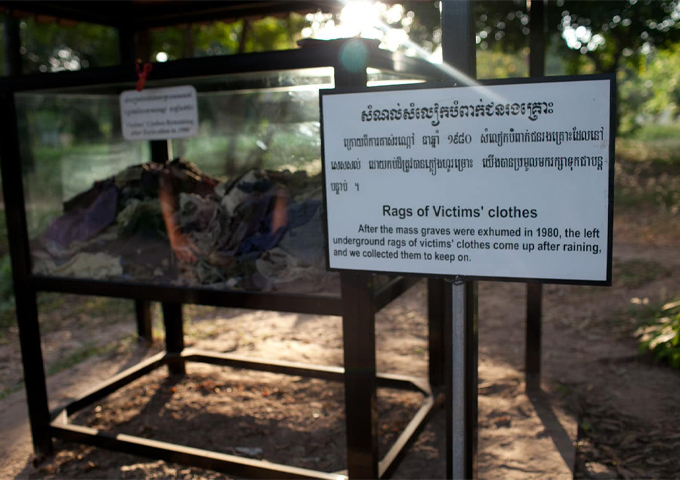
Rags of victims' clothes
No, the Killing Fields were not the only sites where mass killings and executions took place during the Cambodian genocide. While "Killing Fields" is often used to refer to the sites where many mass graves were located, the genocide involved widespread violence and killings throughout Cambodia.
In addition to the Killing Fields, there were many other sites where mass killings and executions took place, including prisons, detention centers, and other locations where people were held captive by the Khmer Rouge. Some estimates suggest there may have been up to 20,000 mass grave sites throughout Cambodia.
15. People still have efficient food delivery during the Khmer Rouge regime.
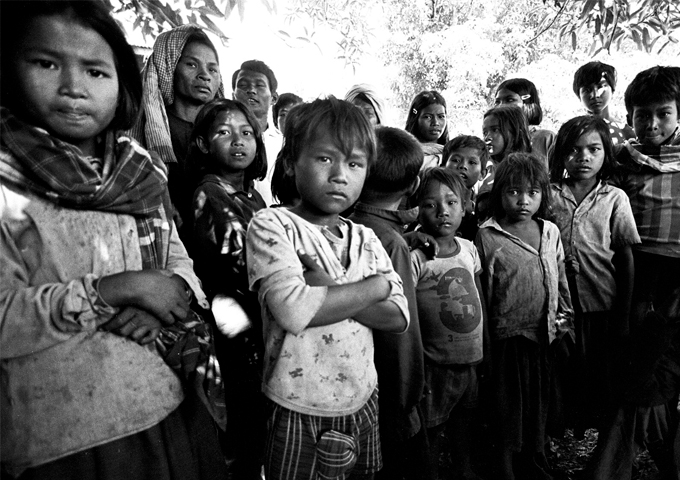
Life in the Cambodia refugees camp
The regime's policies severely disrupted food production and distribution, including the forced relocation of millions of people from urban areas to the countryside, abolished private property and markets, and disrupted traditional agricultural practices.
As a result of these policies, many Cambodians faced extreme food shortages and malnutrition, and many died from starvation. The Khmer Rouge regime also used food as a control tool to reward or punish individuals based on their loyalty to the regime.
Given the widespread food shortages and disruption of food production and distribution, it is unlikely that efficient food delivery was possible during this time. Instead, people were forced to rely on meager rations provided by the Khmer Rouge, foraging for wild foods, and trading goods on the black market to survive.
16. Thinking that the genocide was purely an internal matter.
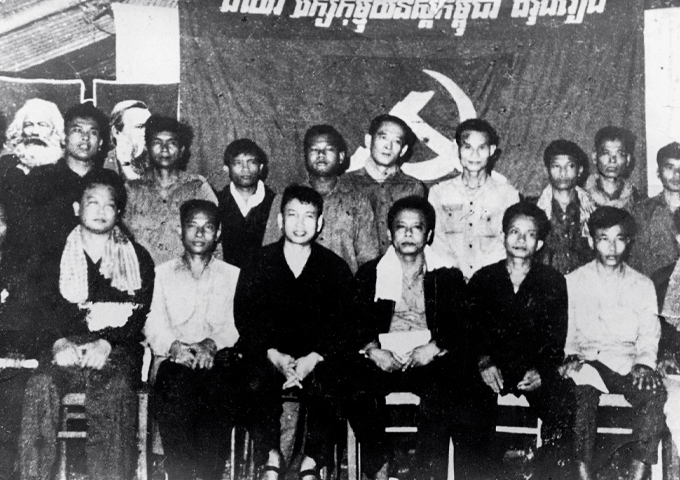
Communist Party of Kampuchea
The causes of the Cambodian genocide are complex and multifaceted and cannot be attributed to a single factor or cause. The genocide occurred during the rule of the Khmer Rouge regime, which was led by the Communist Party of Kampuchea (CPK) and its leader Pol Pot.
Besides aiming at transforming Cambodia into an agrarian utopia, geopolitical factors contributed to the genocide. The Vietnam War and the subsequent fall of the US-backed government in South Vietnam in 1975 led to a power vacuum in Southeast Asia, which the Khmer Rouge regime sought to exploit. The regime saw itself as part of a broader communist revolution and sought to establish close ties with other communist regimes, such as China and North Vietnam.
17. How cruel was it during the Khmer Rouge regime?
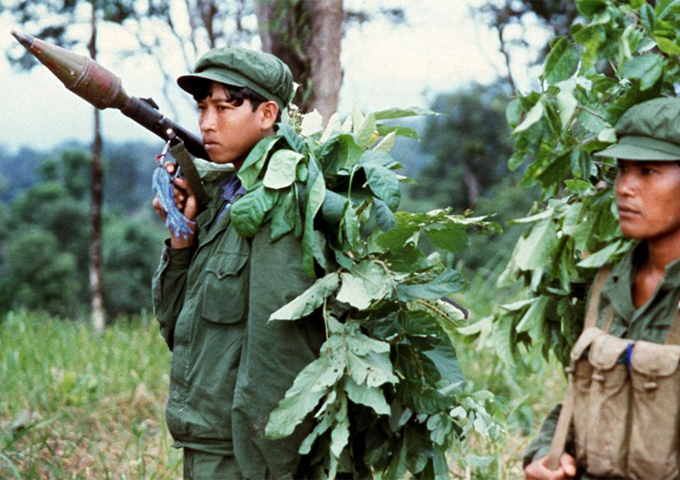
Khmer Rouge violence
The regime implemented policies that led to widespread food shortages and famine throughout the country and forced relocation of millions of people from urban areas to the countryside. The regime abolished private property and markets and disrupted traditional agricultural practices, severely disrupting food production and distribution. Many Cambodians faced extreme food shortages and malnutrition and died from starvation.
The Khmer Rouge also carried out widespread executions, torture, and forced labor, as part of its efforts to eliminate perceived enemies and consolidate its power. People were arrested, tortured, and executed for minor offenses or no reason at all. The Khmer Rouge also used forced labor to build massive public works projects, such as dams and canals, which resulted in the deaths of many thousands of people due to starvation, disease, and overwork.
18. Believing that the conflict ended with the fall of the Khmer Rouge.
-sits-in-a-court-room-in-Phnom-Penh-2022.jpg)
Ex-Khmer Rouge head of state Khieu Samphan (center) sits in a court room in Phnom Penh, 2022
The fall of the Khmer Rouge regime in 1979 did not end the conflict and instability in Cambodia. Throughout the 1980s, Cambodia was mired in civil war, with various factions fighting for control. The Khmer Rouge, though weakened, remained a significant force and continued to wage guerrilla warfare against the government.
It was not until the early 1990s that a peace agreement was reached, with the support of the United Nations, which led to the establishment of a new democratic government and the disarming of the various factions. Today, Cambodia is relatively stable, with a democratically elected government and a growing economy.
However, the legacy of the Khmer Rouge regime and the decades of conflict continue to impact Cambodian society and politics. The country still faces significant poverty, corruption, and human rights challenges.
19. Except for the Khmer Rouge, were there other violent events once in Cambodia?
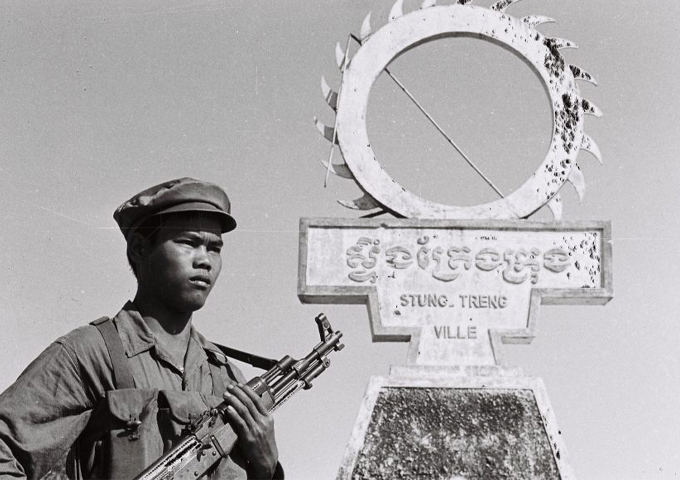
An armed soldier of the Kampuchea United Front for National Salvation
Yes, other instances of violence have occurred in Cambodia besides the Khmer Rouge regime. Some examples include:
1. Civil War: Cambodia experienced a long-running civil war from the 1960s until the 1990s. The war involved various factions, including the Khmer Rouge, who fought against the Cambodian government as well as against each other. The conflict resulted in widespread violence, displacement, and human rights abuses.
2. Vietnamese Occupation: Following the fall of the Khmer Rouge regime in 1979, Vietnam invaded Cambodia and installed a new government. The occupation was marked by violence, including attacks on Vietnamese civilians and soldiers by anti-Vietnamese groups such as the National United Front of Kampuchea (NUFK).
3. Political Violence: Cambodia's political landscape has been marked by violence and repression, including targeted killings of political opposition members and activists. The ruling Cambodian People's Party (CPP) has been accused of using violence and repression to maintain its hold on power.
4. Land Disputes: Cambodia has also experienced violence related to land disputes, particularly in rural areas. In some cases, communities have been forcibly evicted from their land by powerful interests, leading to violent clashes between residents and authorities.
20. The misconception that the Khmer Rouge was a well-organized and disciplined force.
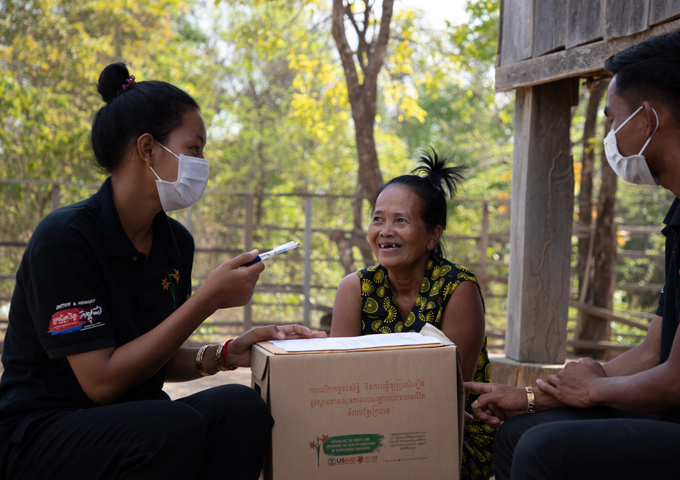
Minea Sem tells her story to DC-Cam (the documentation center of cambodia) volunteers at her home in rural Mondulkiri
While the Khmer Rouge successfully overthrew the Cambodian government in 1975, its chaos and brutality characterized its rule. The Khmer Rouge lacked a clear organizational structure, and many of its leaders were inexperienced and lacked proper training. The regime relied heavily on forced labor and propaganda to maintain control rather than establishing a well-functioning government. The Khmer Rouge's policies resulted in widespread famine and disease, further destabilizing the country.
Furthermore, the Khmer Rouge was plagued by internal divisions and purges. Many of its members were executed for perceived disloyalty, and the regime was constantly in flux as factions vied for power. The Khmer Rouge was far from being a well-organized and disciplined force, and its chaotic rule contributed to the suffering of the Cambodian people.
Ending
In conclusion, remembering the atrocities of the Khmer Rouge is essential to understanding the significance of justice, human rights, and the need to prevent future genocides. By unpacking the misunderstandings surrounding this dark period of Cambodian history, we can help honor the victims' memory and ensure that their suffering is not forgotten.
Through continued education, remembrance, and advocacy for justice, we can work to create a better world, where atrocities
More Related Travel Planning Articles
Most Popular Cambodia Tour Packages
-
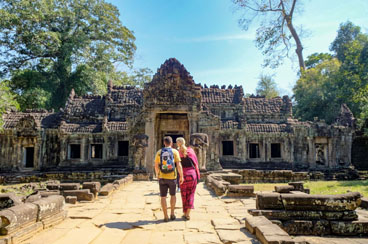 3 Days Siem Reap Temple Tour
3 Days Siem Reap Temple TourSiem Reap
The 3 day Cambodia tour will take you to Siem Reap, the gateway to Angkor temple complex. You will spend a full day to explo ...
-
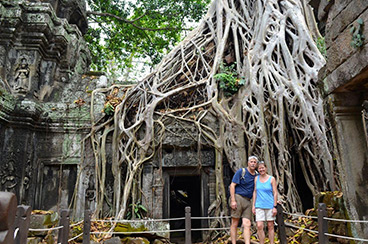 5 Days Cambodia Tour to Siem Reap and Phnom Penh
5 Days Cambodia Tour to Siem Reap and Phnom PenhSiem Reap - Phnom Penh
This 5 days Cambodia tour includes the best of the Siem Reap and the highlights of Phnom Penh. Siem Reap is the gateway ...
-
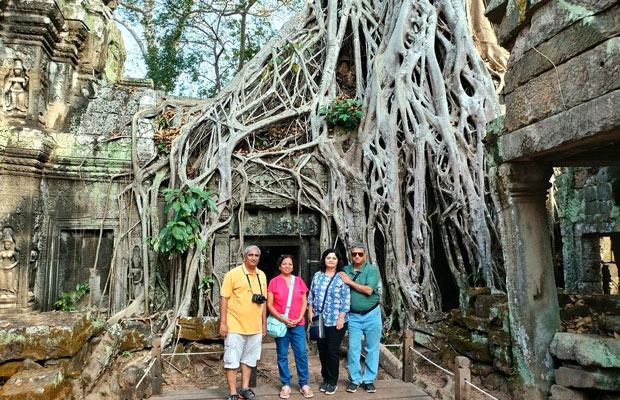
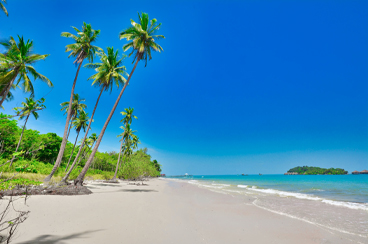 7 Days Cambodia Mysteries Discovery Tour with Beach Relaxing
7 Days Cambodia Mysteries Discovery Tour with Beach RelaxingSiem Reap - Koh Rong Island
Take this 7-day adventure in Cambodia! Discover the mysteries of Siem Reap's ancient temples and relax on the paradise island ...
-
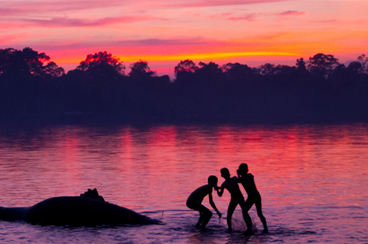 9 Days Classic Cambodia Tour
9 Days Classic Cambodia TourSiem Reap - Sihanoukville - Koh Rong Island - Phnom Penh
This is a classic Cambodia tour that takes 9 days and follows a routine itinerary starting from Siem Reap to Sihanoukville ...
-
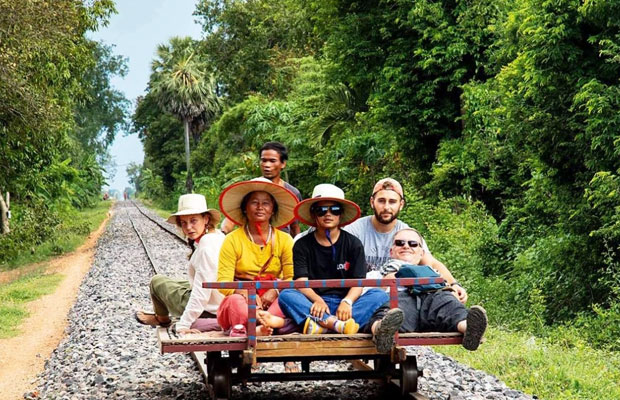
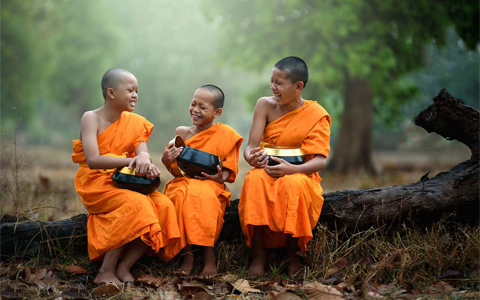 10 Days Cambodian Panoramic Overland Tour
10 Days Cambodian Panoramic Overland TourSiem Reap - Battambang - Phnom Penh - Sihanoukville - Koh Rong Island
Explore Cambodia's beauty in just 10 days with this exciting itinerary. Start in Siem Reap, home to the stunning Angkor templ ...
-
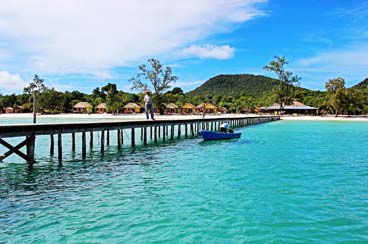 14 Days Cambodia Road Tour to Sihanoukville
14 Days Cambodia Road Tour to SihanoukvilleSiem Reap - Phnom Penh - Kampot - Sihanoukville
During the 14 days Cambodia road tour to Sihanoukville, you will fully explore Siem Reap, Phnom Penh and Kampot and enjo ...
-
 15 Days Cambodia Historical Tour with Beach Relax
15 Days Cambodia Historical Tour with Beach RelaxSiem Reap - Battambang - Phnom Penh - Kampot - Sihanoukville
This 15 days Cambodia historical tour will take you to explore the marvelous Angkor temple complex hidden in the jungle and ...
-
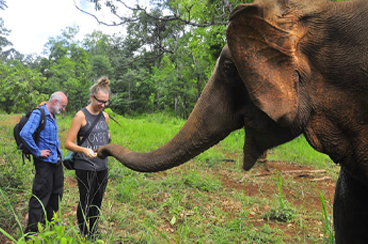 17 Days In-depth Cambodia Tour with Animal Encounters
17 Days In-depth Cambodia Tour with Animal EncountersPhnom Penh - Kampong Cham - Kratie - Mondulkiri - Siem Reap - Sihanoukville
Enjoy a deep exploration of Cambodia in this 17-day tour, including jungle temple adventure, forest trekking, encounters ...
Ask Us A Question For Free

.gif)

.jpg)
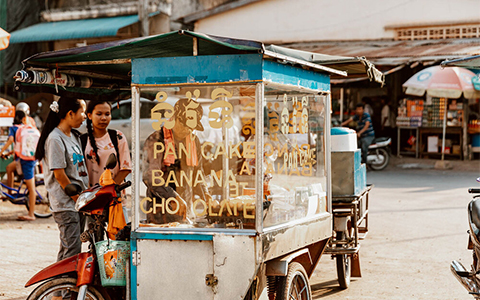
.jpg)

.jpg)
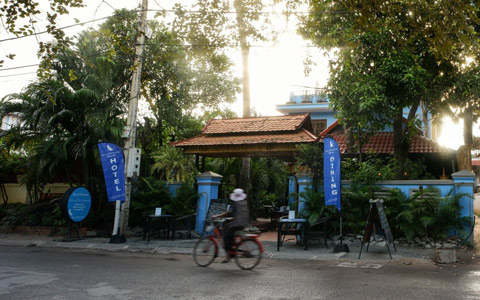
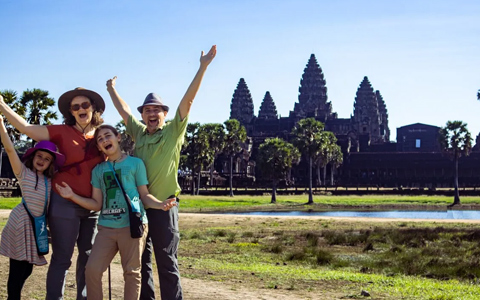
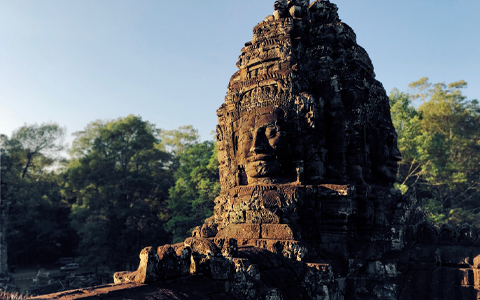
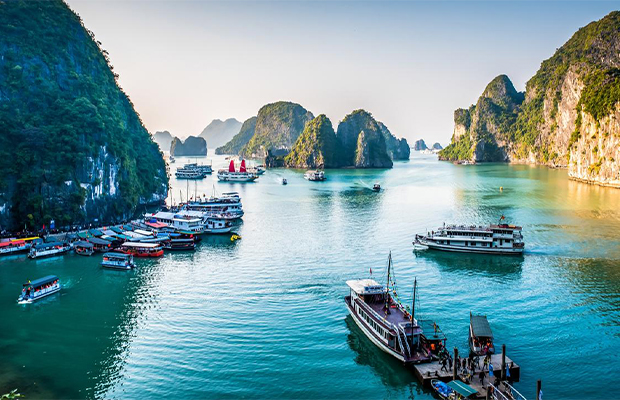
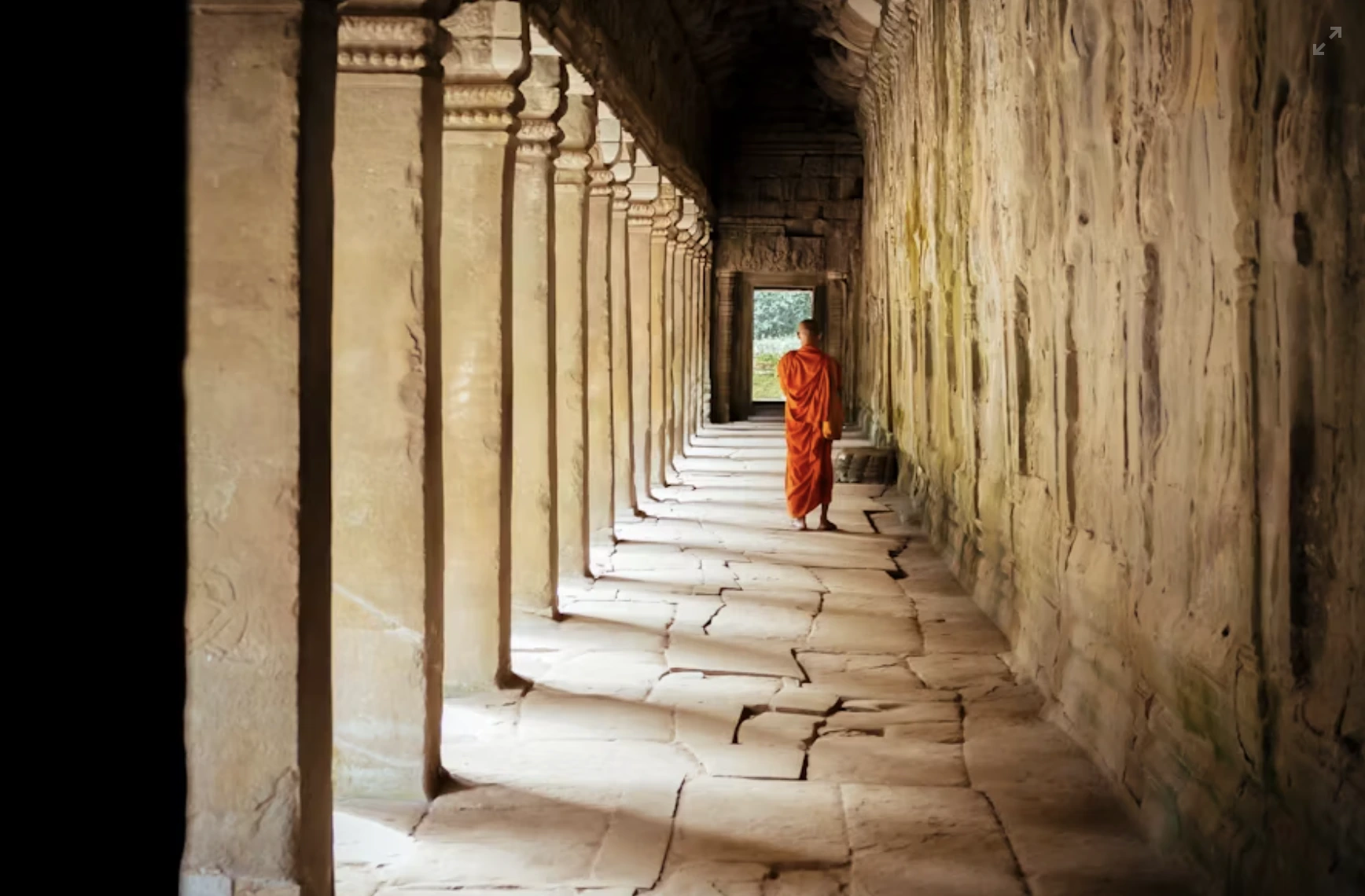
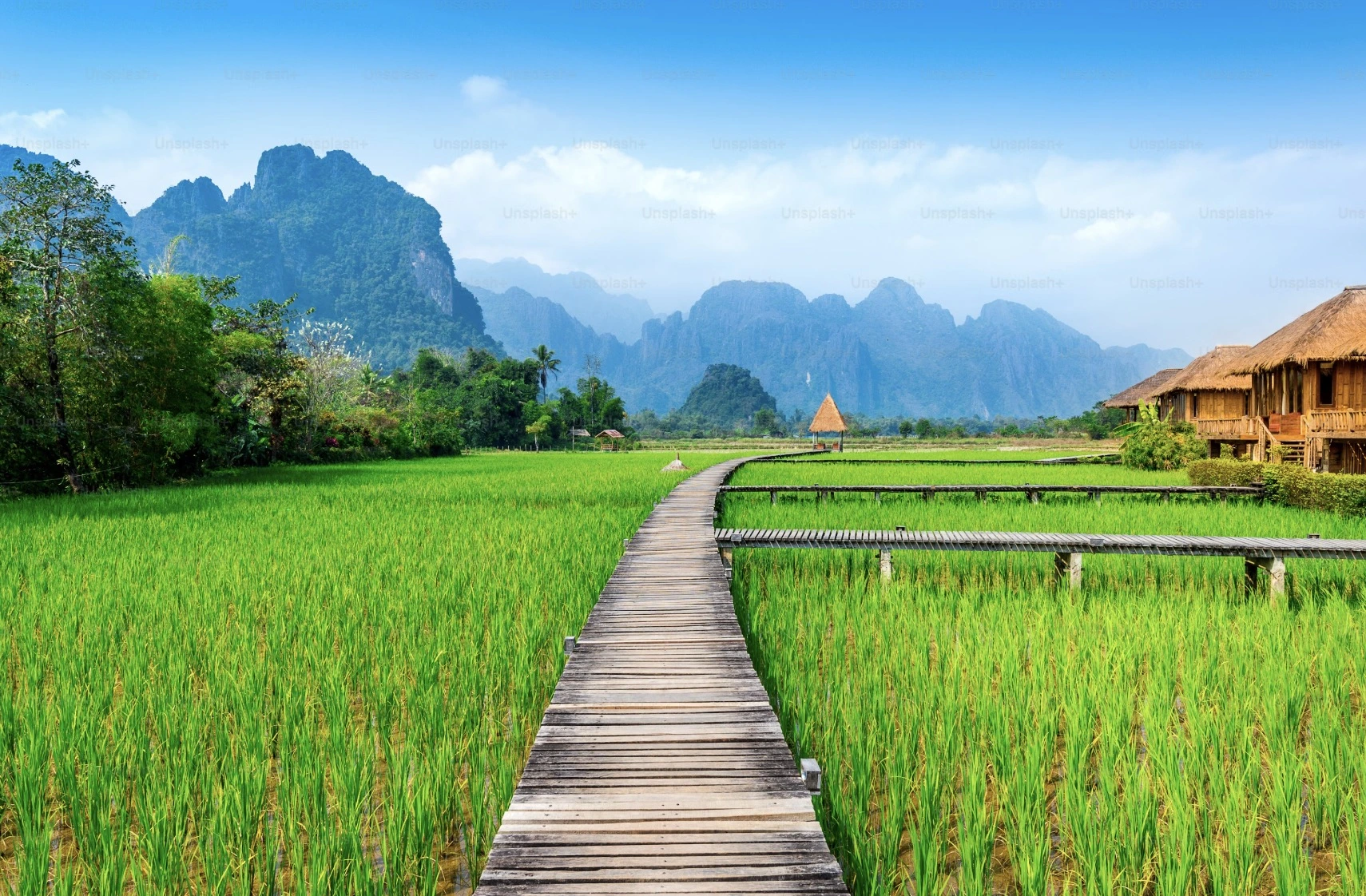
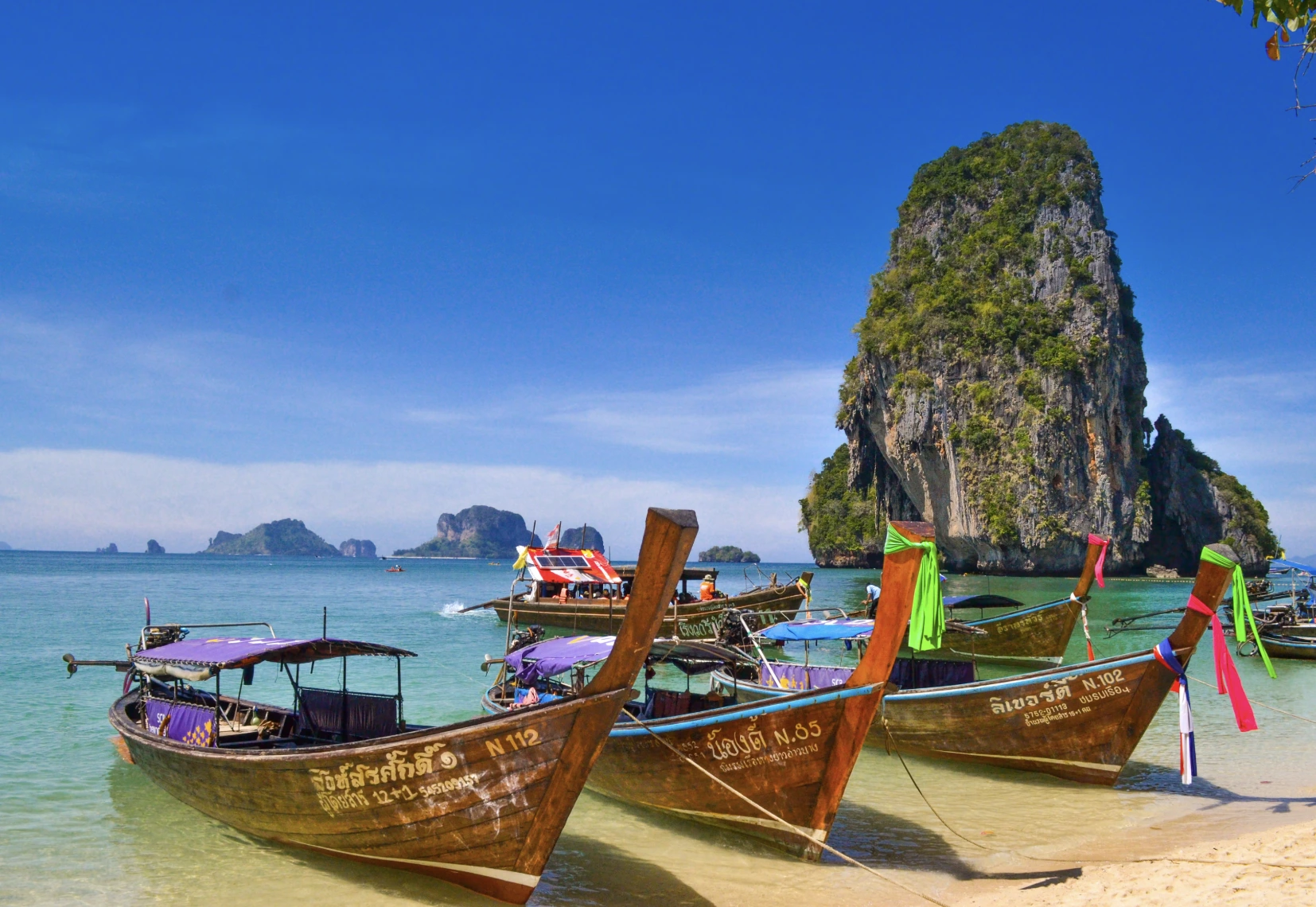
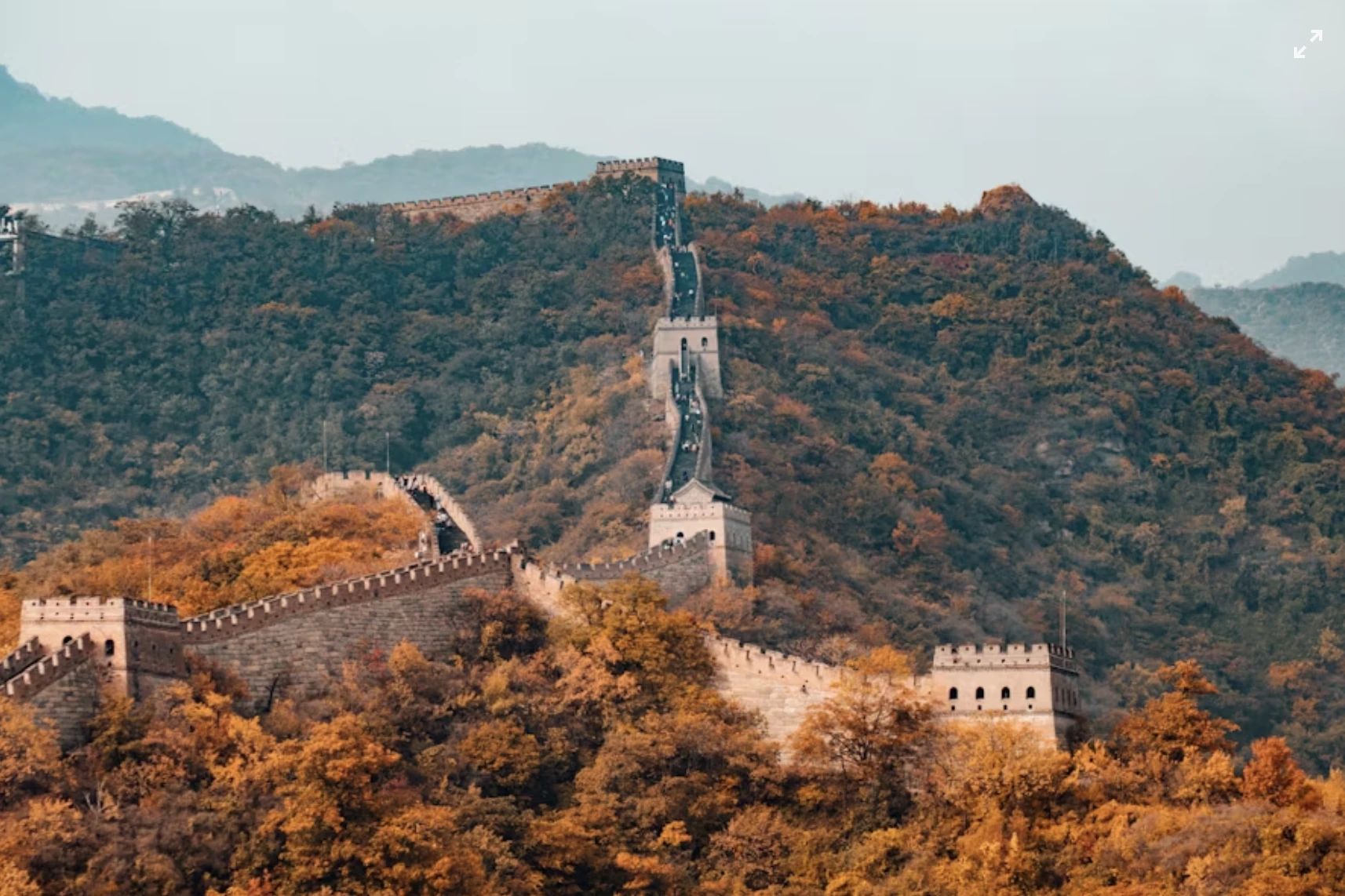


















.jpg)

